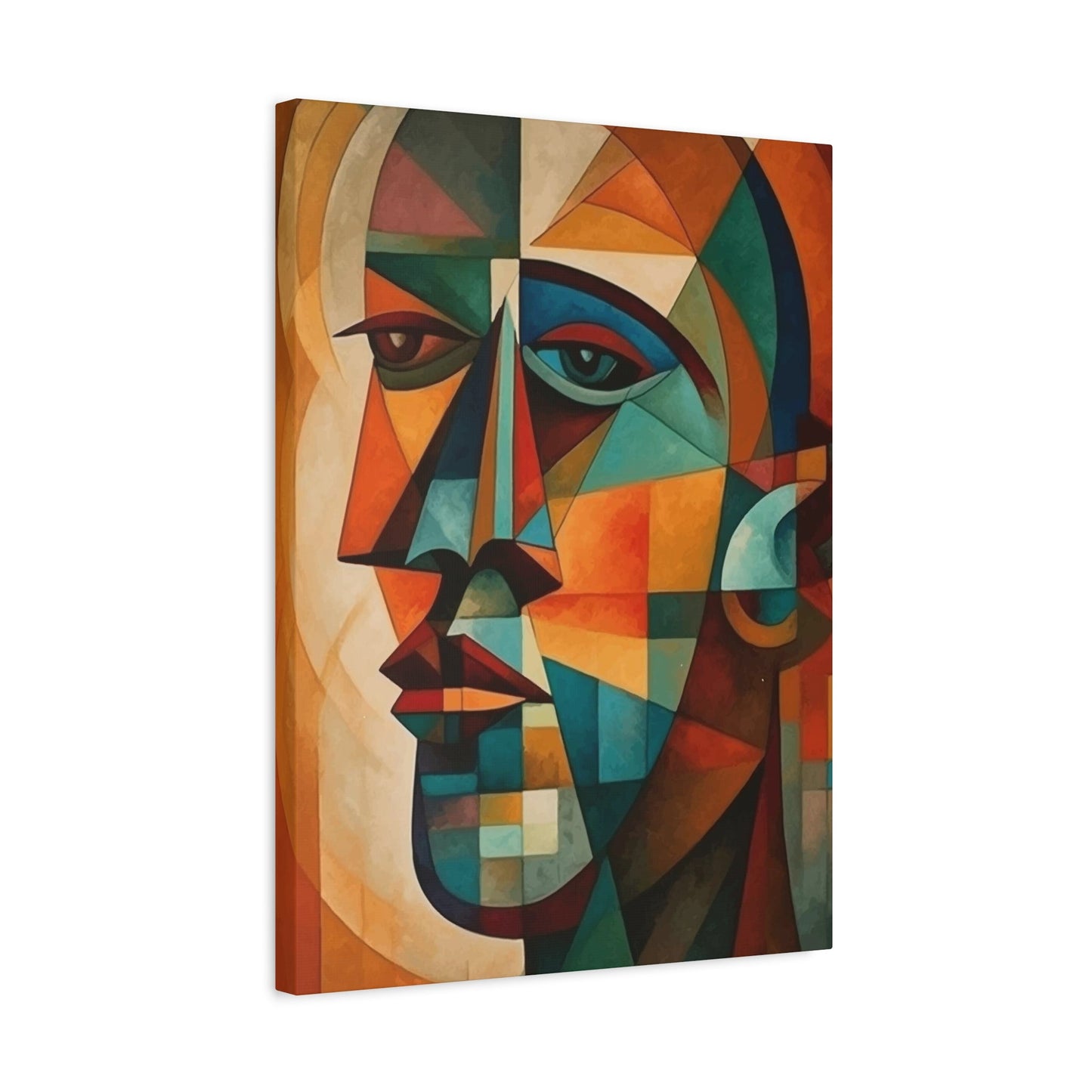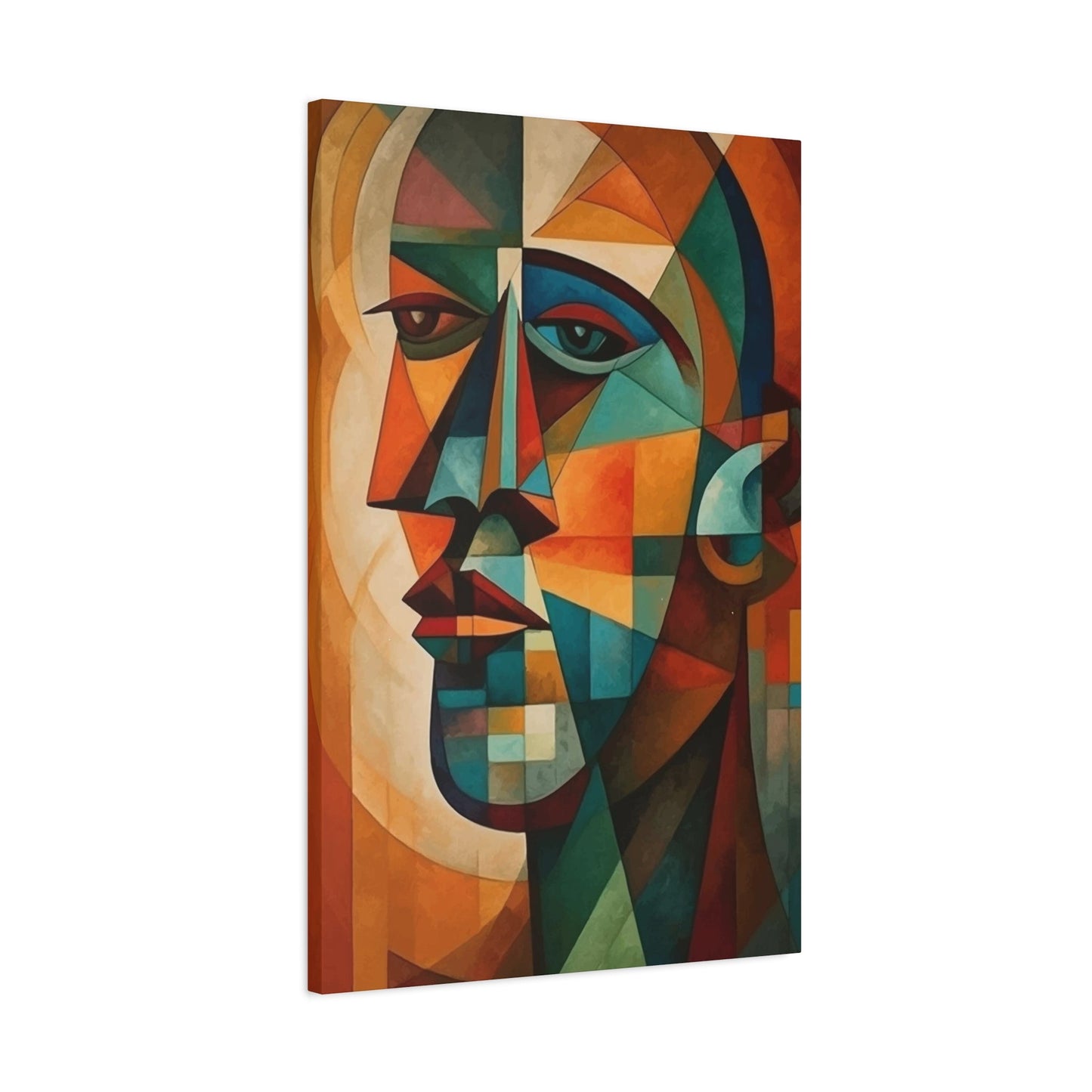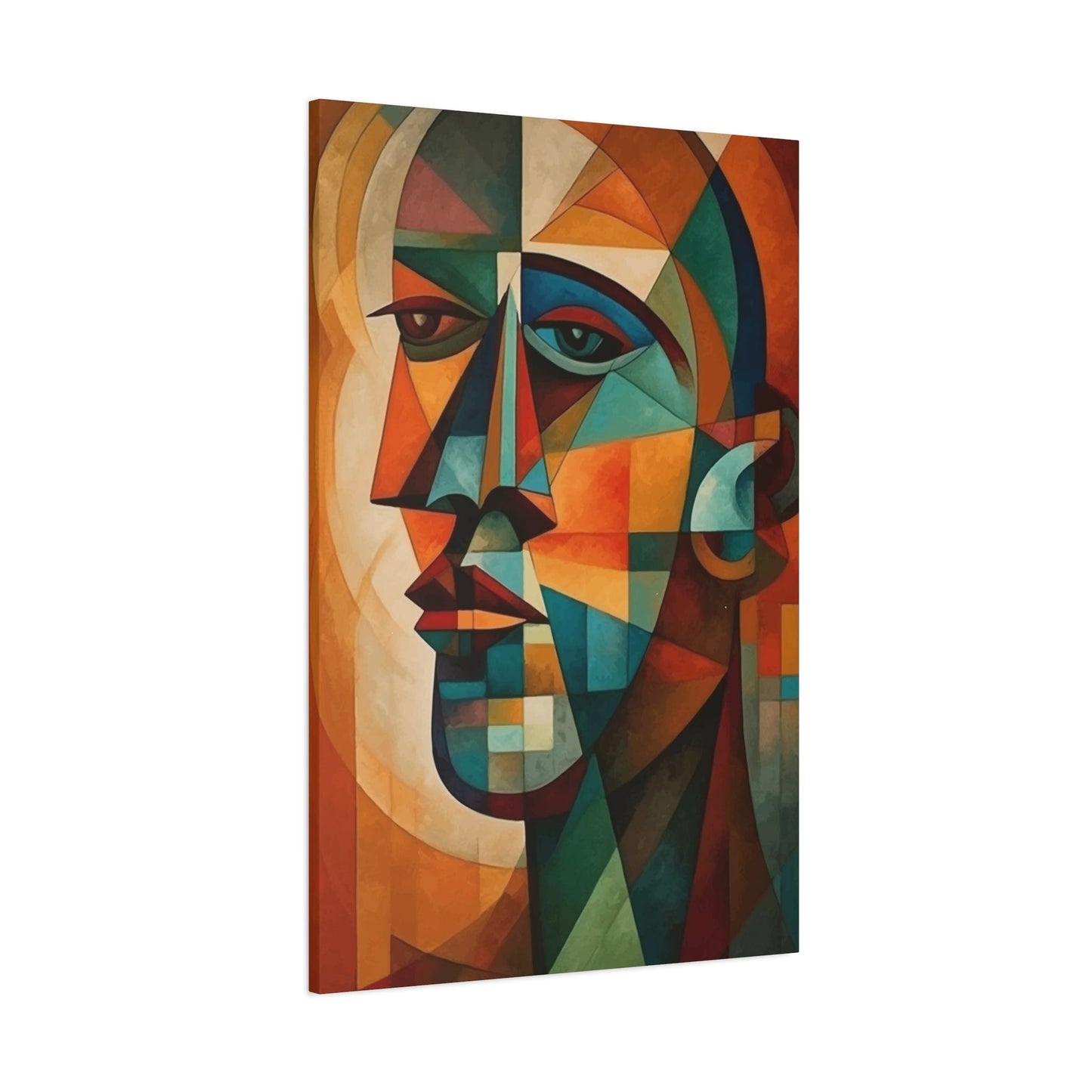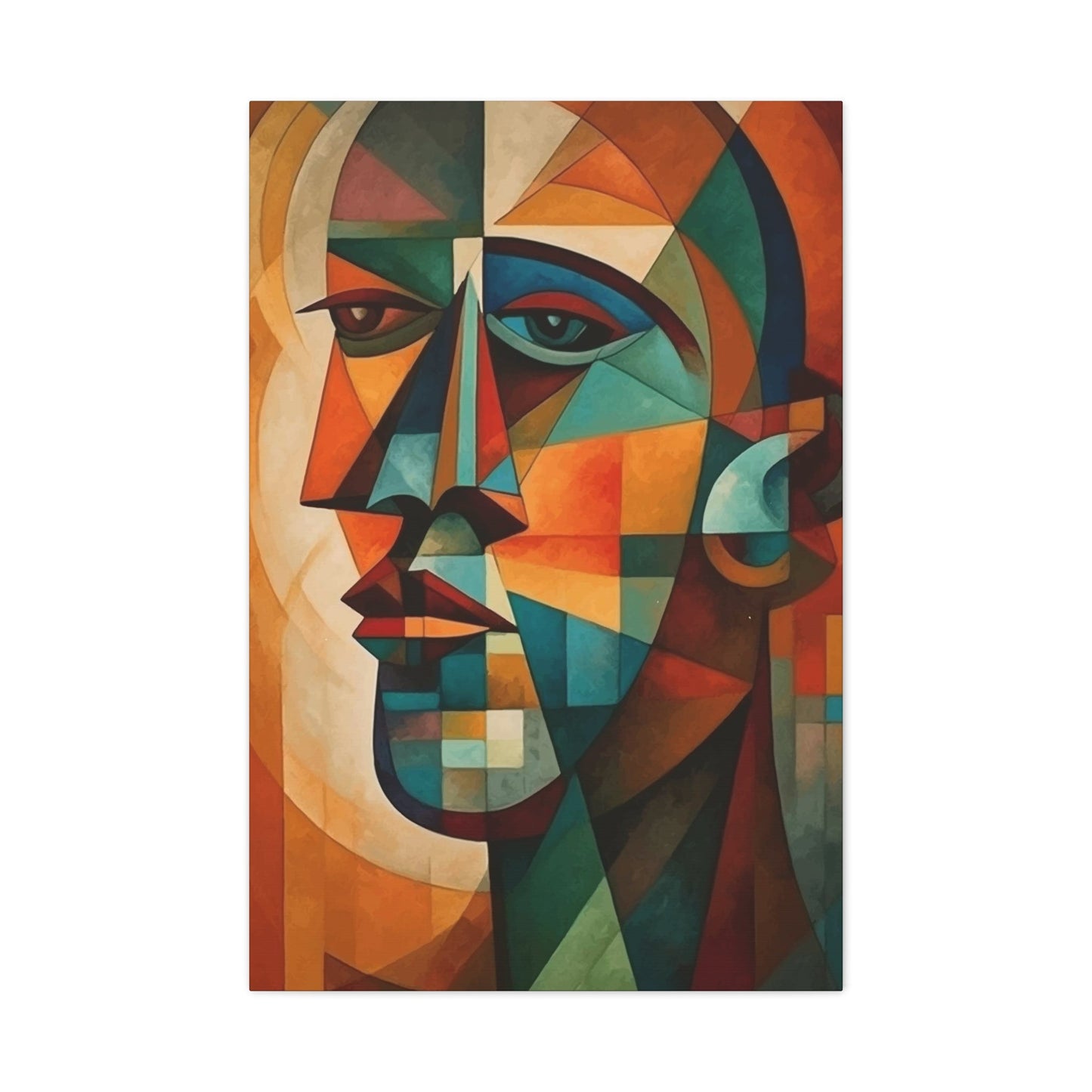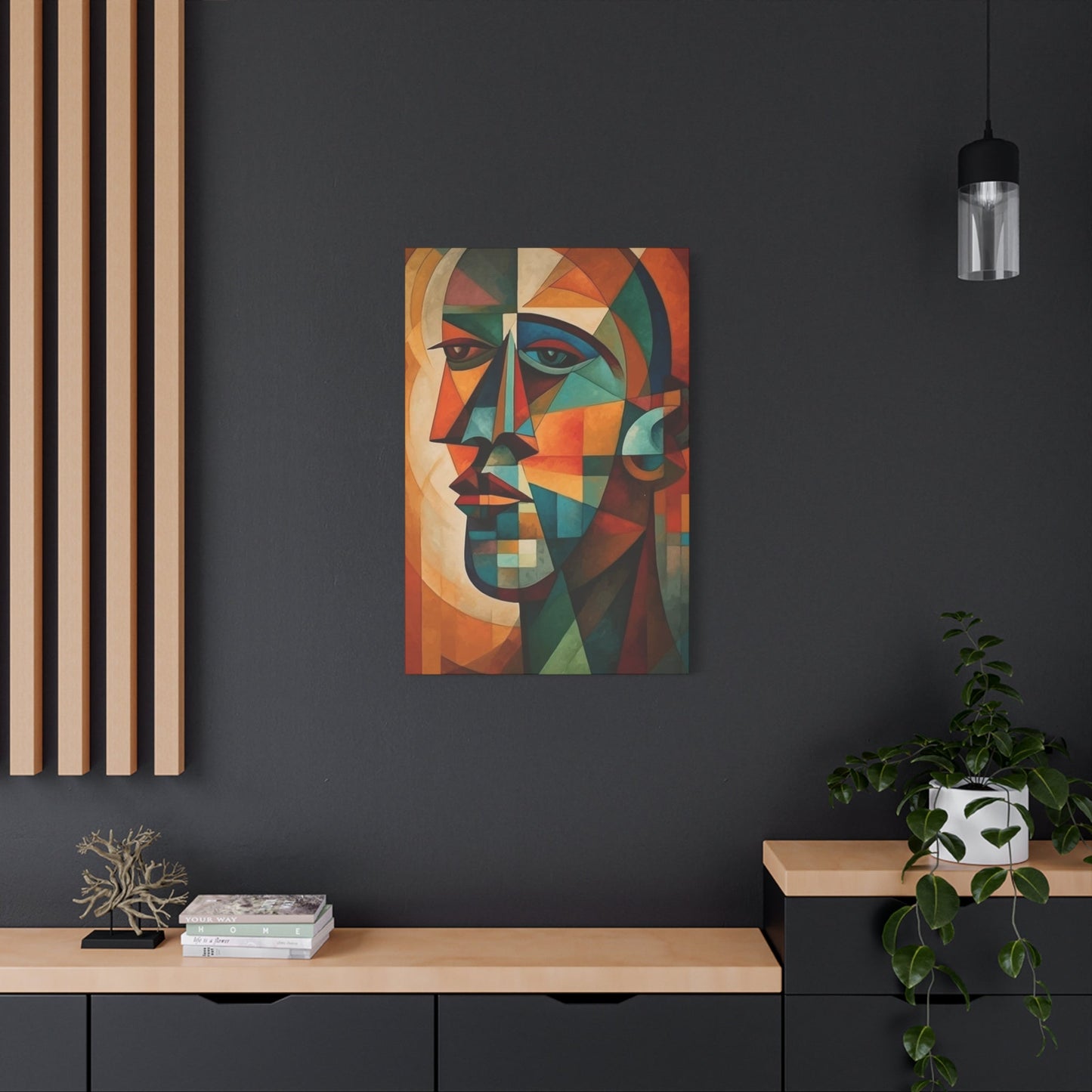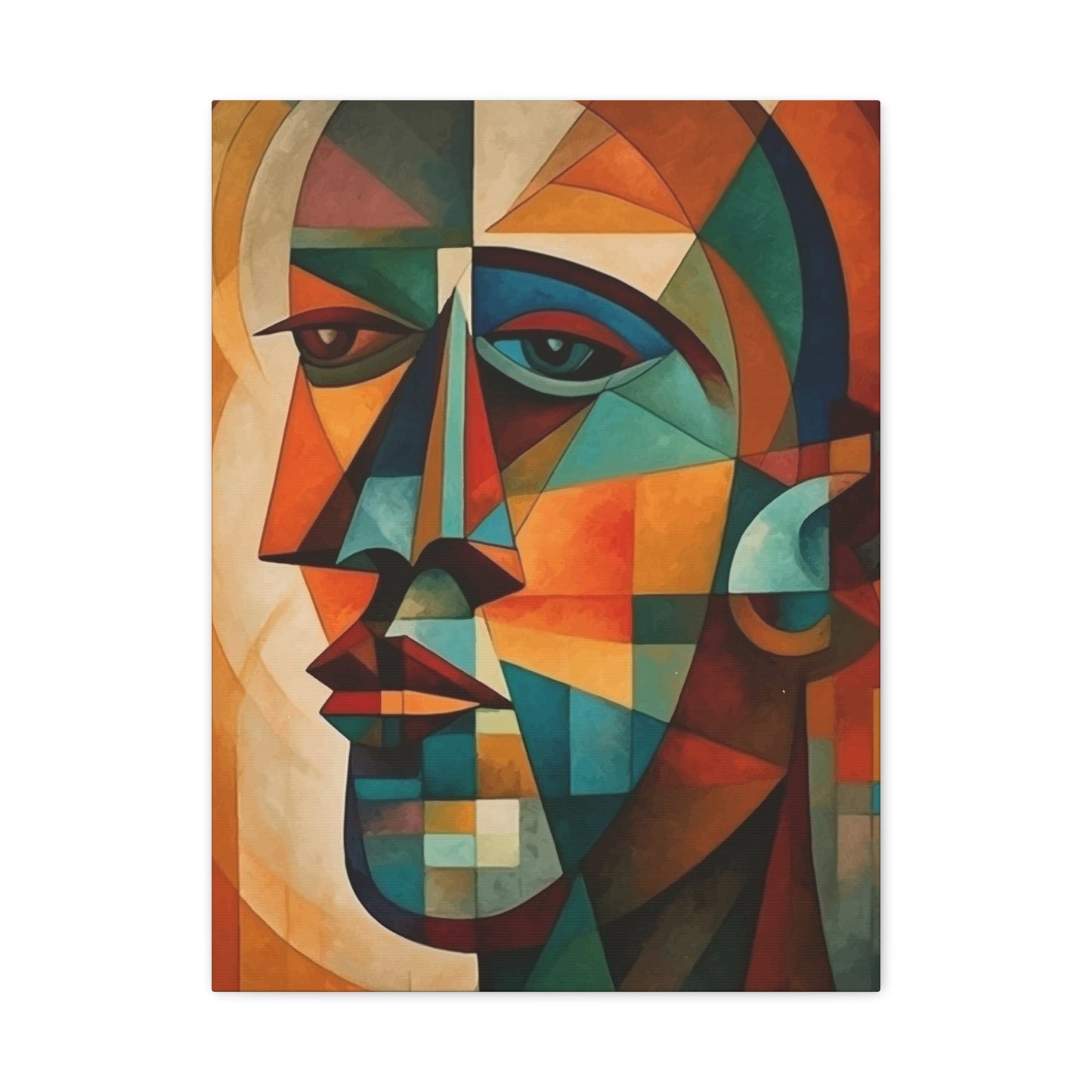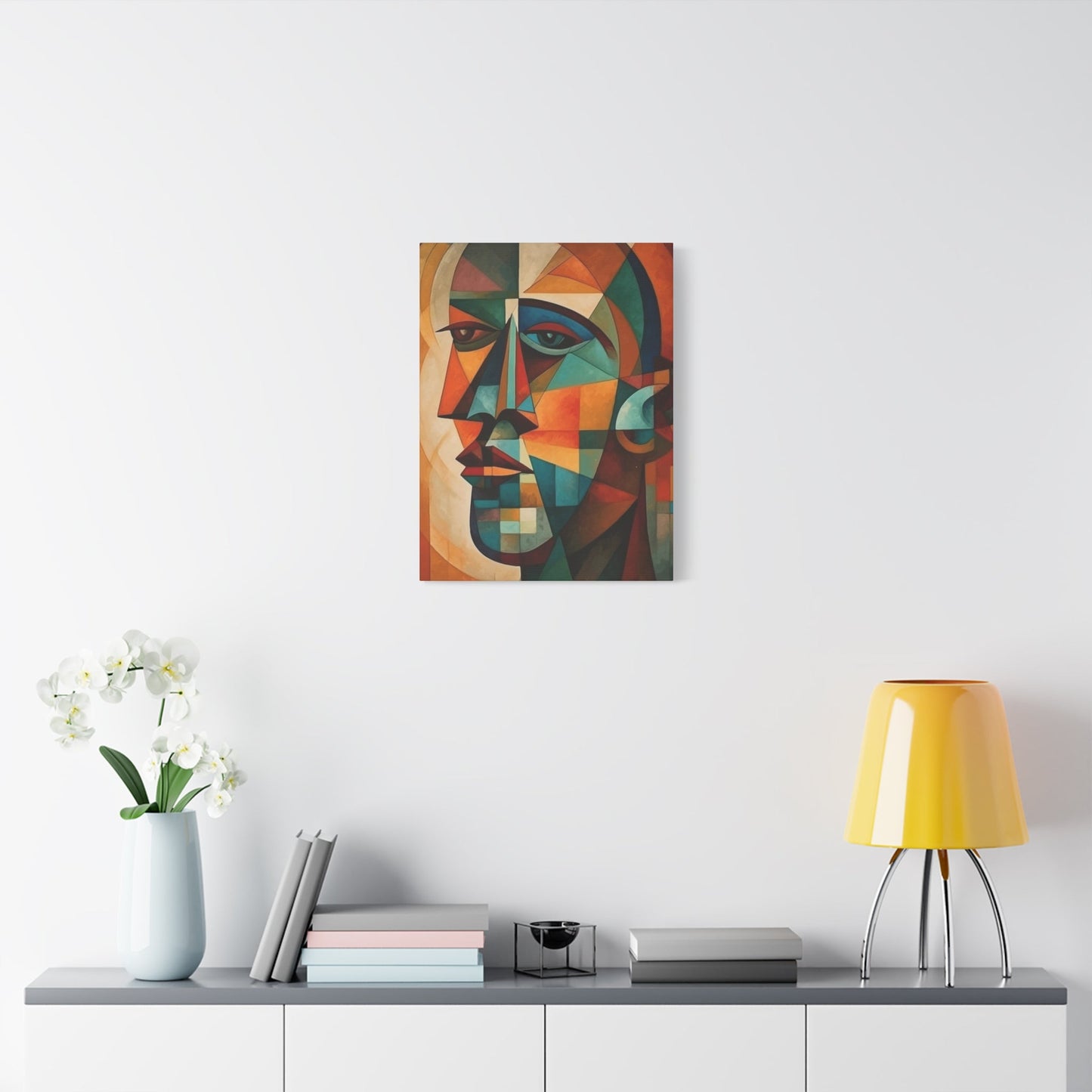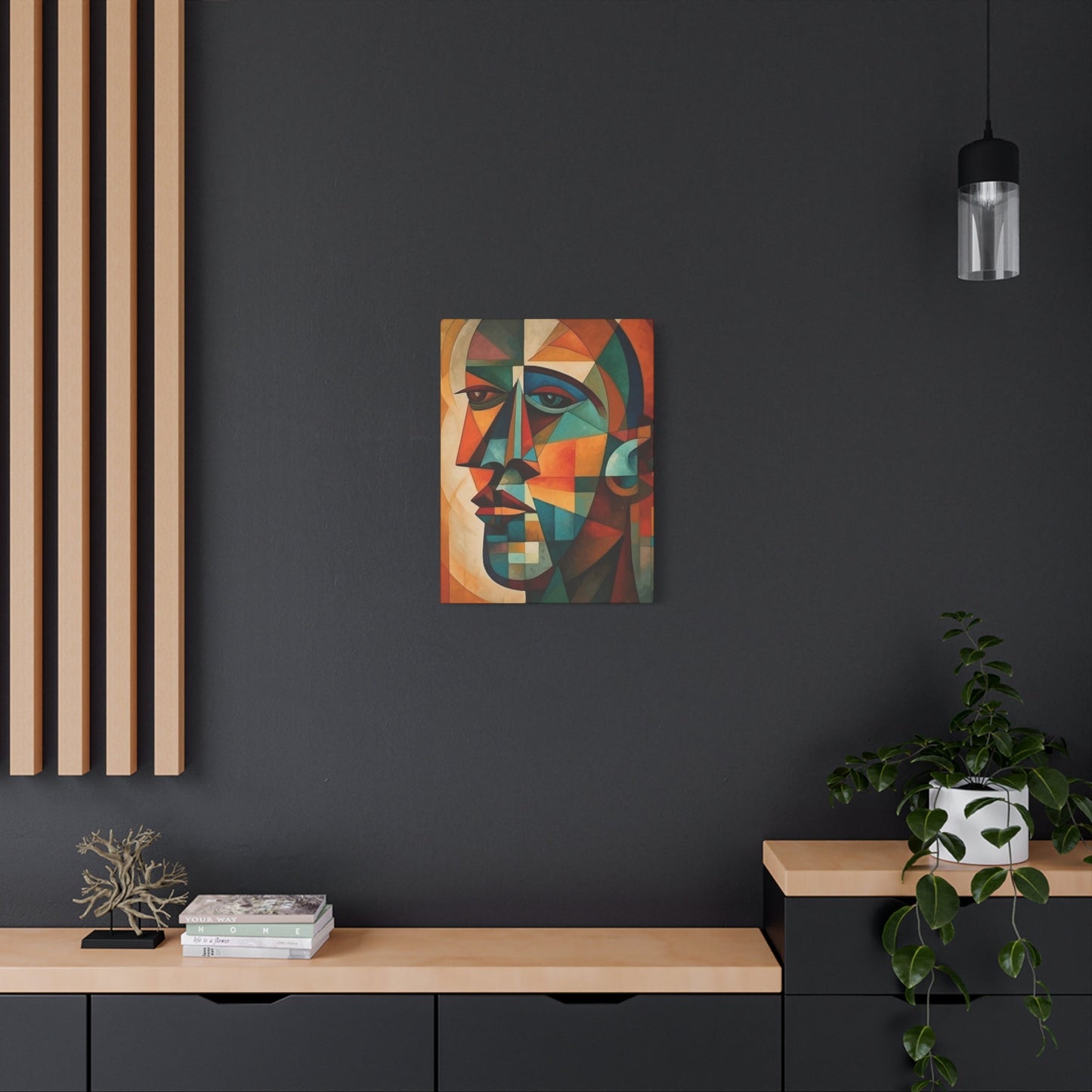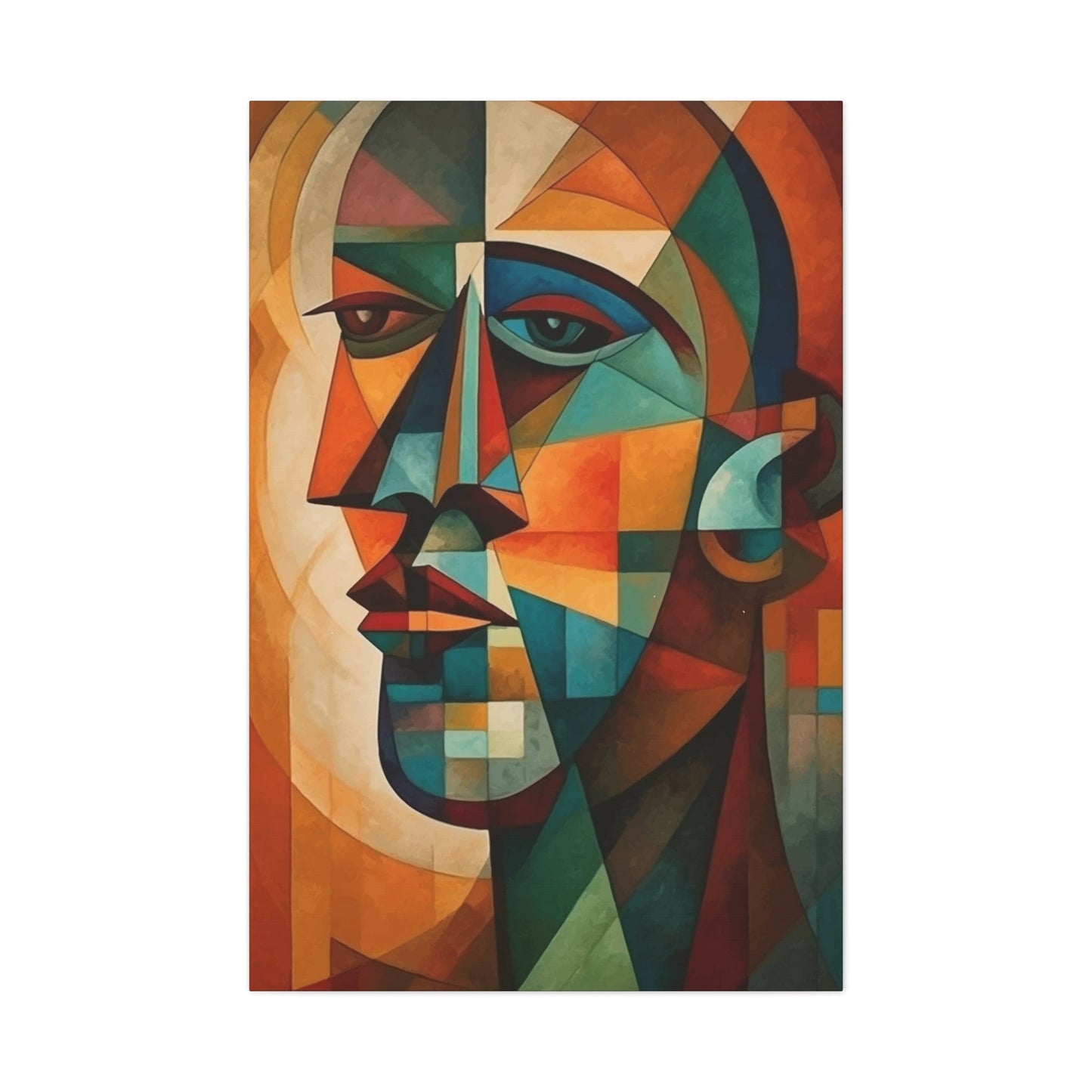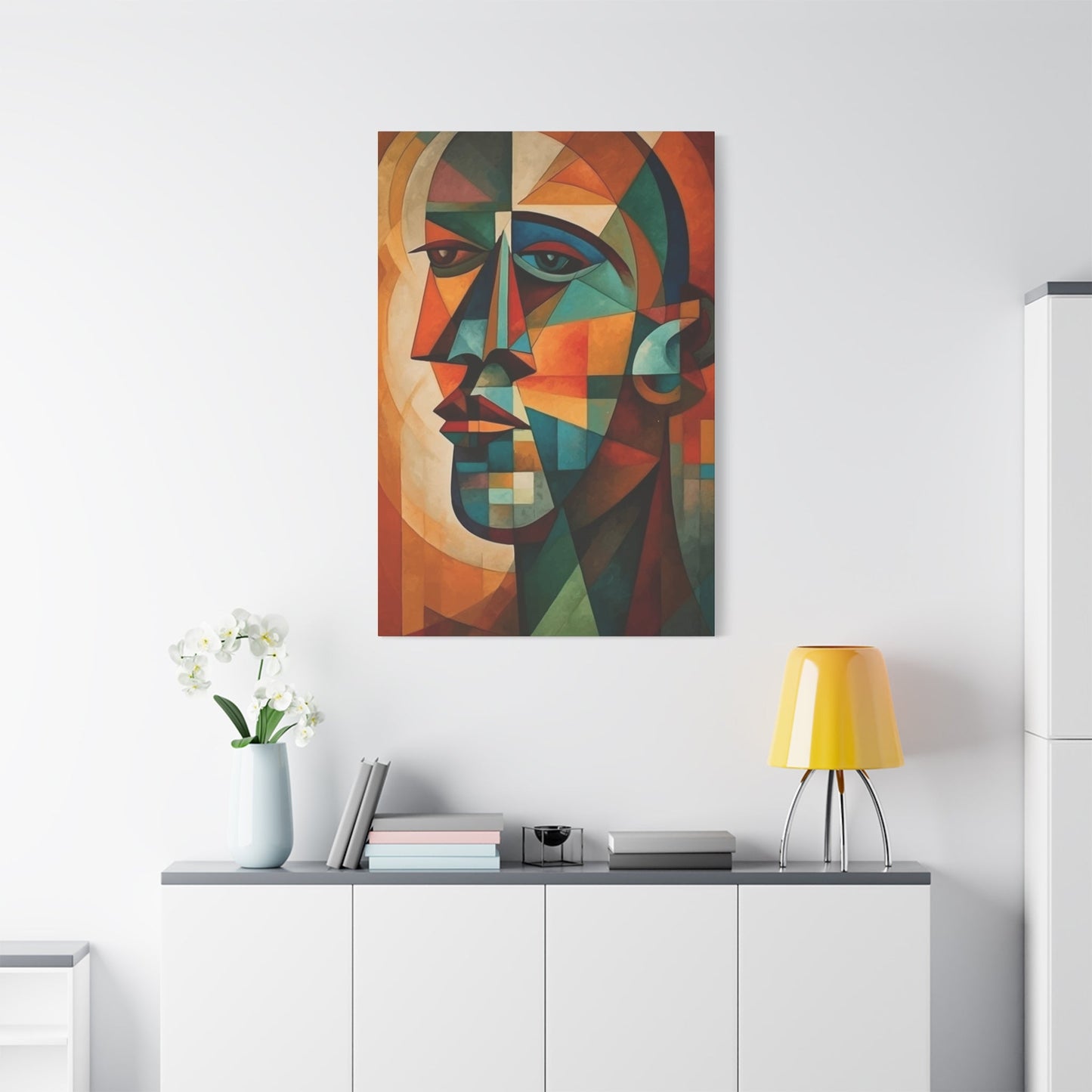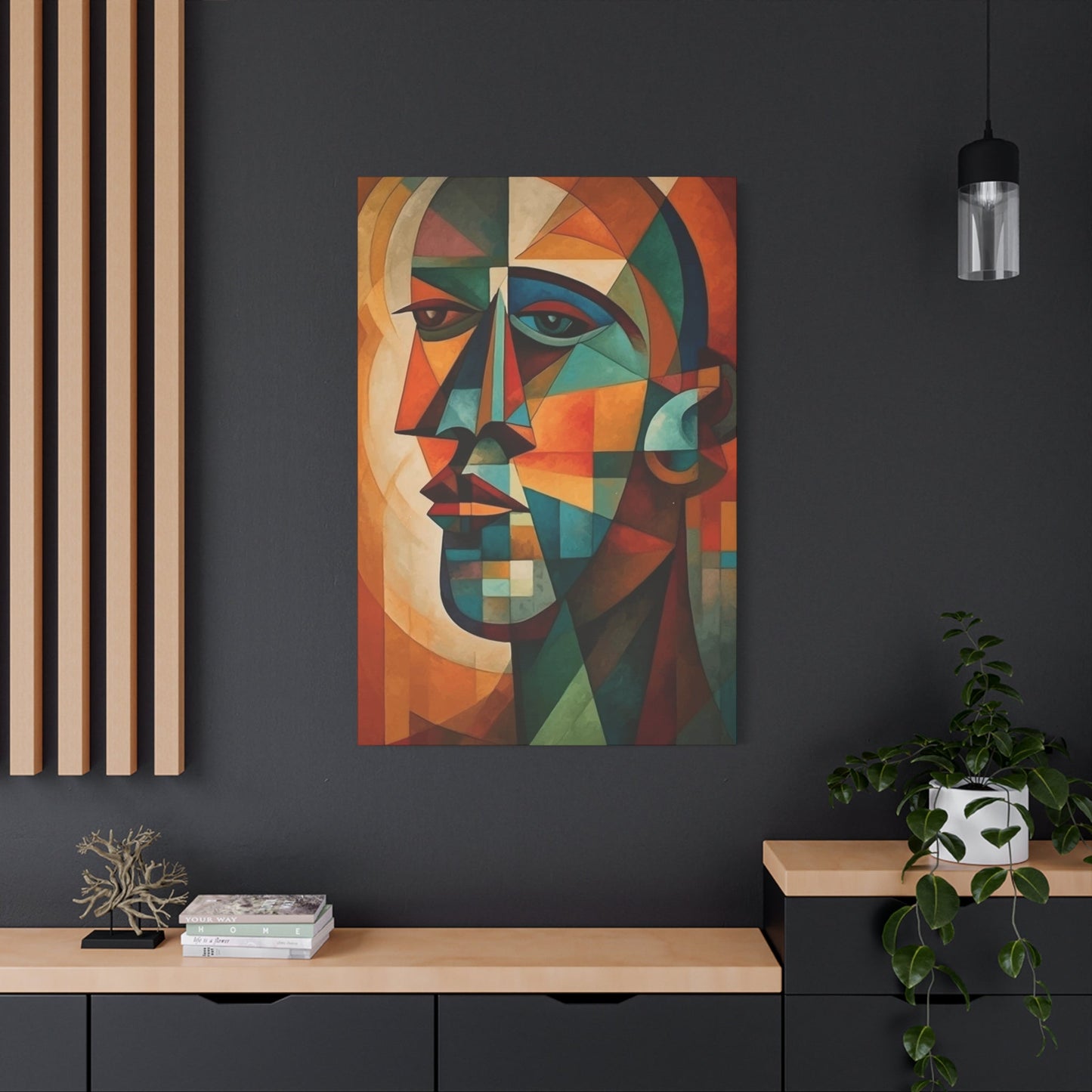Cubism Wall Art: Revolutionary Movement That Redefined Visual Expression
Cubism emerged as one of the most revolutionary artistic movements of the early 20th century, fundamentally altering how artists approached visual representation. This groundbreaking movement challenged traditional artistic conventions by presenting multiple perspectives simultaneously, fragmenting objects into geometric forms, and reconstructing them in abstract compositions. The movement originated around 1907 when artists began questioning the limitations of single-point perspective that had dominated Western art since the Renaissance.
The revolutionary approach of Cubism involved breaking down objects and figures into basic geometric shapes, then reassembling these elements to create compositions that revealed multiple viewpoints at once. This method allowed artists to depict subjects from various angles simultaneously, creating a more comprehensive visual experience than traditional realistic representation. The movement represented a radical departure from naturalistic art, emphasizing the two-dimensional nature of the canvas while exploring the relationship between form and meaning.
Cubist artists rejected the idea that art should simply imitate nature, instead choosing to interpret and reconstruct reality through their unique visual language. This philosophical shift marked the beginning of modern abstract art, influencing countless artistic movements that followed. The movement's emphasis on formal experimentation and conceptual innovation established new possibilities for artistic expression that continue to resonate in contemporary art practices.
The development of Cubism coincided with significant cultural and technological changes in early 20th-century society. The industrial revolution, advances in photography, and exposure to non-Western art forms all contributed to this artistic revolution. Artists sought new ways to express the complexity and fragmentation of modern life, finding in Cubism a visual language that could capture the dynamic nature of contemporary existence.
This artistic movement fundamentally changed how viewers engage with visual art, requiring active participation in decoding and interpreting the fragmented imagery. Rather than passively observing a realistic representation, audiences became involved in reconstructing meaning from the geometric abstractions presented before them. This shift from passive to active viewing established Cubism as a truly modern art form that reflected the changing relationship between art and society.
Pablo Picasso's Pivotal Contribution to Cubist Development
Pablo Picasso stands as the most recognizable figure in the development of Cubism, his innovative vision and technical mastery helping to establish the movement's foundational principles. Born in Spain but working primarily in Paris, Picasso brought together influences from various cultural traditions to create a revolutionary artistic approach. His early exposure to African art, Iberian sculpture, and Post-Impressionist painting provided the foundation for his cubist experiments.
Picasso's journey toward Cubism began during his Rose Period, as he gradually moved away from naturalistic representation toward more simplified and geometric forms. His study of primitive art, particularly African masks and sculptures, profoundly influenced his approach to depicting the human figure. These non-Western artistic traditions demonstrated alternative ways of representing three-dimensional forms on flat surfaces, inspiring Picasso to develop his own geometric vocabulary.
The artist's analytical mind and willingness to experiment led him to deconstruct traditional artistic methods systematically. He began by simplifying forms, reducing complex shapes to their essential geometric components, then reassembling these elements in new configurations. This process allowed him to explore multiple perspectives simultaneously, creating compositions that challenged viewers' expectations and expanded the possibilities of visual representation.
Picasso's collaboration with other artists, particularly Georges Braque, proved crucial to Cubism's development. Their artistic dialogue pushed both artists to refine their techniques and explore new possibilities within the cubist framework. This collaborative relationship demonstrated how artistic innovation often emerges through the exchange of ideas between creative individuals working toward similar goals.
Throughout his career, Picasso continued to evolve his cubist approach, moving from the early analytical phase through synthetic developments and beyond. His ability to adapt and transform the movement while maintaining its essential characteristics ensured Cubism's continued relevance and influence. Even as he explored other artistic styles, Picasso's cubist innovations remained a constant reference point, informing his work across multiple decades.
The Spanish artist's impact on Cubism extended beyond his individual creations to encompass his role as a teacher and inspiration to other artists. His willingness to share ideas and techniques helped spread cubist principles throughout the international art community. Young artists from around the world traveled to Paris to study his methods, carrying cubist innovations back to their home countries and adapting them to local artistic traditions.
Georges Braque and the Genesis of Cubist Innovation
Georges Braque played an equally important role in Cubism's development, though his contributions are sometimes overshadowed by Picasso's fame. The French artist brought a different sensibility to the movement, emphasizing subtle tonal variations and sophisticated spatial relationships that complemented Picasso's more dramatic innovations. Their partnership represented one of art history's most productive collaborations, each artist pushing the other to explore new possibilities within the cubist framework.
Braque's background as a house painter provided him with intimate knowledge of materials and techniques that proved invaluable in developing cubist methods. His understanding of how paint behaves on canvas, combined with his sensitivity to color relationships, allowed him to create sophisticated visual effects within the movement's geometric constraints. This technical expertise enabled him to achieve remarkable subtlety in his cubist compositions, demonstrating that the movement could encompass a wide range of artistic approaches.
The French artist's contribution to Cubism included significant innovations in the treatment of form and texture. He developed techniques for suggesting three-dimensional volume through careful manipulation of light and shadow, even within the movement's flattened pictorial space. His experiments with trompe-l'oeil effects and illusionistic devices added new dimensions to cubist practice, showing how traditional artistic techniques could be adapted to serve modern artistic goals.
Braque's musical background influenced his approach to visual composition, leading him to think of paintings in terms of rhythmic relationships and harmonic structures. This musical sensibility brought a different kind of organization to his cubist works, emphasizing the temporal aspect of viewing and the sequential revelation of visual information. His compositions often unfold like musical phrases, with elements appearing and disappearing as the viewer's eye moves across the canvas.
The artist's exploration of still-life subjects provided crucial development for cubist methodology. His careful analysis of everyday objects like guitars, bottles, and newspapers allowed him to refine techniques for depicting complex forms within the movement's geometric framework. These humble subjects became vehicles for sophisticated formal experiments, demonstrating how Cubism could transform the most ordinary materials into profound artistic statements.
Braque's later development of papier collé technique marked another significant contribution to cubist innovation. By incorporating actual materials like newspaper and wallpaper into his compositions, he challenged traditional boundaries between painting and sculpture, reality and representation. This technique opened new possibilities for artistic expression that influenced not only Cubism but also subsequent movements like Dadaism and Surrealism.
Distinguishing Analytical from Synthetic Cubist Approaches
The evolution of Cubism can be understood through two primary phases: Analytical and Synthetic, each representing distinct approaches to the movement's core principles. Analytical Cubism, developing roughly between 1907 and 1912, focused on breaking down forms into geometric components and analyzing the relationships between these elements. Artists working in this style systematically deconstructed their subjects, revealing the underlying geometric structures that composed complex forms.
During the Analytical phase, artists employed a restricted color palette, typically working with browns, grays, and ochres to avoid distraction from formal concerns. This monochromatic approach allowed viewers to focus on the structural relationships within compositions rather than being influenced by coloristic effects. The limited palette also emphasized the movement's intellectual rather than emotional approach to artistic creation, distinguishing it from more expressive contemporary movements.
Analytical Cubist compositions typically featured multiple overlapping planes that suggested different viewpoints of the same subject. These fragmented perspectives created complex spatial relationships that challenged traditional notions of pictorial coherence. Viewers were required to mentally reconstruct the depicted subjects from the various geometric clues provided by the artist, making the viewing experience an active rather than passive engagement with the artwork.
The transition to Synthetic Cubism around 1912 marked a significant shift in the movement's approach and methodology. Rather than breaking down existing forms, Synthetic Cubists began by constructing compositions from geometric elements, building up rather than breaking down their subjects. This approach allowed for greater freedom in color usage and compositional organization, leading to more vibrant and varied artistic expressions within the cubist framework.
Synthetic Cubism introduced collage techniques that incorporated actual materials from everyday life into artistic compositions. Newspaper clippings, sheet music, playing cards, and other found objects became integral parts of artworks, blurring the boundaries between art and life. This innovation challenged traditional definitions of painting and sculpture while opening new possibilities for artistic expression that continue to influence contemporary art practices.
The synthetic approach also allowed for greater emphasis on decorative and symbolic elements within cubist compositions. Artists could incorporate patterns, textures, and references to popular culture that had been largely excluded from the more austere analytical phase. This development made Cubism more accessible to broader audiences while maintaining its intellectual rigor and formal innovation.
Both phases of Cubism contributed essential elements to the movement's overall development and legacy. Analytical Cubism established the theoretical foundation for geometric abstraction, while Synthetic Cubism demonstrated how these principles could be applied to create more varied and expressive artistic works. Together, these approaches created a comprehensive artistic language that continues to influence visual culture across multiple disciplines.
Essential Characteristics of Cubist Artistic Expression
Cubist art exhibits several distinctive characteristics that set it apart from other artistic movements and establish its unique visual identity. The most fundamental feature involves the geometric fragmentation of forms, breaking down complex subjects into basic shapes like cubes, cylinders, and cones. This geometric vocabulary provided artists with a systematic method for analyzing and representing three-dimensional forms on flat surfaces while maintaining awareness of the canvas's two-dimensional nature.
Multiple perspective representation constitutes another crucial characteristic of Cubist expression. Rather than depicting subjects from a single viewpoint, cubist artists showed multiple angles simultaneously, creating compositions that revealed information invisible from any single vantage point. This approach challenged Renaissance perspective systems while offering viewers a more comprehensive understanding of depicted subjects through the accumulation of visual information from various viewpoints.
The flattening of pictorial space represents a significant departure from traditional artistic representation. Cubist artists rejected the illusion of deep three-dimensional space that had dominated Western art since the Renaissance, instead emphasizing the flat surface of the canvas. This approach acknowledged the inherent artificiality of painting while exploring new possibilities for organizing visual elements within compressed spatial relationships.
Cubist compositions typically feature overlapping planes and faceted surfaces that create complex visual relationships between different elements. These intersecting geometric forms generate dynamic tensions within the pictorial space, creating visual rhythms that guide the viewer's eye through the composition. The careful organization of these geometric elements demonstrates the intellectual rigor underlying cubist artistic practice.
The reduction of color palettes during certain phases of Cubism served to emphasize formal relationships over decorative effects. By limiting their color choices, artists directed attention toward structural concerns and spatial relationships rather than coloristic attractions. This restraint demonstrated the movement's prioritization of conceptual innovation over traditional artistic pleasures, though later developments would reintroduce more varied color usage.
Cubist artists frequently incorporated text and symbolic elements into their compositions, adding layers of meaning beyond pure formal concerns. Letters, numbers, and words became visual elements that operated both as abstract shapes and carriers of semantic content. This integration of textual elements anticipated later developments in conceptual art while demonstrating Cubism's engagement with contemporary culture and communication.
The emphasis on process and construction rather than imitation marked another fundamental characteristic of cubist practice. Artists revealed their working methods through visible brushstrokes, construction lines, and analytical marks that showed how compositions were built up rather than simply copied from nature. This transparency about artistic process contributed to modernism's broader project of examining and revealing the conditions of artistic production.
Revolutionary Impact on Artistic Development
Cubism's influence on subsequent artistic development cannot be overstated, as the movement fundamentally altered the trajectory of Western art and established new possibilities for creative expression. The movement's challenge to traditional representation methods opened doors for abstract art movements that would dominate much of 20th-century artistic production. By demonstrating that art need not imitate nature, Cubism liberated artists to explore pure formal relationships and conceptual concerns.
The movement's analytical approach to form influenced numerous subsequent artistic styles, from German Expressionism to Russian Constructivism. Artists across Europe and America adapted cubist principles to their own cultural contexts, creating regional variations that expanded the movement's influence while maintaining its core innovations. This international adoption demonstrated Cubism's universal applicability and its relevance to diverse artistic traditions.
Cubism's impact extended beyond painting to influence sculpture, architecture, and design disciplines. The movement's geometric vocabulary provided architects and designers with new formal languages for creating modernist structures and objects. Buildings, furniture, and decorative arts began incorporating cubist-inspired geometric forms, spreading the movement's influence throughout material culture and everyday life.
The movement's emphasis on intellectual analysis over emotional expression established new criteria for evaluating artistic achievement. Critics and theorists developed new frameworks for understanding and appreciating non-representational art, leading to more sophisticated approaches to artistic interpretation and evaluation. This theoretical development proved crucial for supporting subsequent abstract movements that built upon cubist foundations.
Cubism's challenge to traditional artistic hierarchy had profound implications for institutional art practices. Museums, galleries, and art schools were forced to reconsider their approaches to collecting, displaying, and teaching art. The movement's success demonstrated that artistic innovation could emerge from sources outside established academic traditions, leading to more diverse and inclusive approaches to artistic education and promotion.
The movement's integration of popular culture elements through collage techniques anticipated later developments in Pop Art and postmodern practices. By incorporating everyday materials and references into fine art contexts, Cubism began breaking down barriers between high and low culture that would be further eroded by subsequent movements. This democratizing tendency had long-lasting effects on artistic practice and cultural discourse.
Cubism's influence on art criticism and theory established new vocabularies for discussing formal innovation and conceptual development. Terms like "analytical," "synthetic," and "cubist" became standard parts of art historical discourse, providing tools for understanding not only this movement but also subsequent developments in modern and contemporary art. The theoretical framework developed to explain Cubism continues to inform scholarly approaches to artistic analysis.
Masterworks of Cubist Artistic Achievement
The Cubist movement produced numerous masterworks that exemplify its innovative principles while demonstrating the range of expression possible within its geometric framework. These significant works not only established the movement's artistic credentials but also provided models for subsequent generations of artists seeking to understand and apply cubist techniques. Each masterwork represents a unique solution to the challenges of translating three-dimensional reality into the movement's distinctive visual language.
Among the most celebrated cubist compositions are still-life paintings that transform everyday objects into complex geometric arrangements. These works demonstrate how ordinary subjects like bottles, guitars, and fruit could become vehicles for sophisticated formal experiments. The artists' ability to extract geometric essence from familiar objects while maintaining recognizable elements showed how Cubism could balance abstraction with representation, creating works that were both intellectually challenging and visually accessible.
Portrait paintings within the cubist tradition present particular challenges and achievements, as artists worked to capture human personality and presence through geometric fragmentation. These works required careful balance between formal innovation and psychological insight, demonstrating how the movement's analytical methods could reveal rather than obscure the essential characteristics of portrayed individuals. The success of cubist portraiture proved that the movement's techniques could address traditional artistic subjects while providing fresh perspectives on human representation.
Landscape compositions in cubist style showed how the movement's principles could be applied to outdoor subjects and architectural environments. These works often incorporated multiple viewpoints and temporal experiences, showing how spaces change appearance from different positions and at different times. The geometric analysis of natural and built environments provided new ways of understanding spatial relationships while maintaining connection to specific places and experiences.
Large-scale cubist compositions demonstrated the movement's potential for monumental artistic expression. These ambitious works showed how geometric fragmentation and multiple perspectives could be organized into coherent large-format compositions without losing their analytical clarity or visual impact. The successful execution of major cubist works proved the movement's viability for public and institutional commissions, expanding its influence beyond private collections.
Experimental works that pushed the boundaries of cubist methodology provided important developments in the movement's evolution. These pieces often incorporated unusual materials, techniques, or subject matter that tested the limits of geometric representation. Such experimental works contributed to the movement's theoretical development while demonstrating its potential for continued innovation and adaptation to new artistic challenges.
The international character of cubist masterworks reflects the movement's global influence and local adaptations. Artists from different countries and cultural backgrounds created significant works that maintained cubist principles while incorporating elements from their own artistic traditions. This international development showed how the movement's innovations could be universally applied while allowing for regional variation and cultural specificity.
Geometric Principles in Cubist Practice
The systematic use of geometric forms constituted the foundation of cubist artistic practice, providing artists with a structured approach to analyzing and representing complex subjects. Basic geometric shapes like cubes, cylinders, spheres, and cones served as building blocks for constructing compositions that revealed the underlying structural relationships within depicted subjects. This geometric vocabulary allowed artists to maintain consistency in their approach while exploring infinite variations in application and combination.
The reduction of complex forms to geometric essentials required careful analysis of subjects to identify their most important structural characteristics. Artists developed methods for observing how light, shadow, and perspective affected the appearance of three-dimensional objects, then translated these observations into geometric terms. This analytical process demonstrated the intellectual rigor underlying cubist practice while showing how systematic observation could lead to innovative artistic solutions.
Angular relationships played a crucial role in cubist compositions, as artists used intersecting lines and planes to create dynamic visual tensions within their works. The careful orchestration of angular relationships generated rhythmic patterns that guided viewers' eyes through compositions while creating sense of movement and energy despite the static nature of geometric forms. These angular dynamics became signature elements of cubist visual language.
The mathematical precision required for successful geometric organization influenced how cubist artists approached composition and proportion. Many works demonstrate sophisticated understanding of mathematical relationships, golden ratios, and harmonic proportions that create visual balance and aesthetic satisfaction. This mathematical foundation provided objective criteria for evaluating compositional success while connecting cubist practice to broader traditions of geometric art.
Color relationships within geometric frameworks presented unique challenges and opportunities for cubist artists. The interaction between geometric forms and color created new possibilities for spatial suggestion and visual organization. Artists learned to use color to clarify geometric relationships while maintaining the movement's emphasis on structural analysis over decorative effect.
The scale and proportion of geometric elements within cubist compositions required careful consideration to maintain visual coherence and expressive power. Artists developed sensitivity to how the relative sizes of geometric forms affected the overall impact of their works. This attention to proportional relationships demonstrated another aspect of the intellectual discipline underlying successful cubist practice.
Three-dimensional implications of geometric forms on flat surfaces created ongoing challenges for cubist artists. The suggestion of volume and depth through geometric means required sophisticated understanding of how two-dimensional marks could create illusions of three-dimensional space. Artists developed various techniques for suggesting sculptural qualities while maintaining awareness of the canvas's flat surface, creating productive tensions between representation and abstraction.
African Art's Influence on Cubist Development
The discovery and appreciation of African art by European artists in the early 20th century provided crucial inspiration for cubist innovations, offering alternative approaches to representation that challenged Western artistic conventions. African masks, sculptures, and decorative objects demonstrated sophisticated methods for suggesting three-dimensional forms through simplified geometric means, inspiring cubist artists to develop their own geometric vocabularies for depicting complex subjects.
The conceptual approach to representation found in African art differed significantly from European naturalistic traditions, emphasizing symbolic and spiritual content over literal appearance. This alternative understanding of art's purpose resonated with cubist artists who were seeking to move beyond mere imitation toward more conceptual forms of expression. African art showed how visual representation could convey meaning and presence without relying on realistic detail or perspective systems.
The treatment of the human figure in African sculptural traditions provided direct inspiration for cubist figure painting and portraiture. African artists' methods for suggesting facial features, body proportions, and psychological presence through geometric simplification offered models for cubist attempts to capture human essence through non-naturalistic means. This influence can be traced through numerous cubist works that adapt African formal solutions to European artistic contexts.
The integration of functional and aesthetic concerns in African art objects demonstrated how geometric design could serve both practical and expressive purposes. This integration influenced cubist artists' understanding of how formal innovation could address broader cultural and social functions rather than existing purely as aesthetic experimentation. The connection between form and function would become an important aspect of modernist design philosophy.
The spiritual and ritual dimensions of African art provided cubist artists with alternative models for understanding art's social role and cultural significance. Rather than viewing art primarily as decoration or representation, African traditions demonstrated how visual forms could serve ceremonial, protective, and transformative functions within communities. This broader understanding of art's potential influenced cubist artists' ambitions for their own work.
The technical innovations found in African art, particularly in woodcarving and metalworking, showed European artists new possibilities for manipulating materials and creating surface textures. These technical insights influenced both painting and sculptural applications of cubist principles, expanding the range of effects available to artists working within the movement's geometric framework.
The collecting and display of African art in European museums and private collections during the early 20th century created opportunities for sustained study and influence that might not have been possible through casual exposure. This institutional support for African art appreciation helped establish it as a legitimate source of artistic inspiration, contributing to more sophisticated understanding of its formal and conceptual innovations.
Modernist Legacy and Contemporary Relevance
Cubism's impact on modern artistic development established the movement as a crucial foundation for understanding 20th and 21st-century visual culture. The movement's innovations in representation, composition, and conceptual approach provided essential precedents for numerous subsequent artistic movements, from Abstract Expressionism to Digital Art. Contemporary artists continue to reference and adapt cubist principles, demonstrating the movement's ongoing relevance and influence.
The movement's challenge to traditional representation methods opened possibilities for artistic expression that continue to be explored in contemporary practice. Artists working with new media, digital technologies, and interdisciplinary approaches often draw upon cubist strategies for analyzing and reconstructing visual experience. The movement's emphasis on multiple perspectives and fragmented viewpoints resonates with contemporary concerns about identity, globalization, and digital culture.
Cubism's influence on design disciplines has expanded far beyond its original artistic context to encompass architecture, graphic design, fashion, and product design. The movement's geometric vocabulary and analytical approach provide designers with tools for creating visually compelling and functionally effective solutions to contemporary problems. This practical application of cubist principles demonstrates the movement's utility beyond pure artistic expression.
The theoretical frameworks developed to understand and explain Cubism continue to inform scholarly approaches to visual culture and artistic interpretation. Concepts like analytical and synthetic approaches, geometric reduction, and multiple perspective representation provide useful tools for analyzing not only historical artworks but also contemporary visual phenomena including advertising, digital media, and popular culture.
Cubism's international character and adaptability to different cultural contexts make it particularly relevant to contemporary global artistic discourse. The movement's ability to incorporate influences from diverse traditions while maintaining its distinctive character provides a model for how artistic innovations can cross cultural boundaries while respecting local variations and interpretations.
The movement's integration of popular culture elements through collage techniques anticipated many features of contemporary art practice, including appropriation, remix culture, and the breakdown of boundaries between high and low art. These pioneering innovations in cultural mixing and media combination continue to influence how artists approach source material and cultural reference in their work.
Educational applications of cubist principles provide valuable tools for developing visual literacy and analytical thinking skills. The movement's systematic approach to observation, analysis, and reconstruction offers pedagogical methods that can be adapted to various educational contexts, from elementary art education through advanced artistic training.
Collage Innovation in Synthetic Development
The introduction of collage techniques during the Synthetic phase of Cubism marked a revolutionary expansion of artistic possibilities that influenced not only the movement itself but also numerous subsequent developments in modern and contemporary art. This innovative approach involved incorporating actual materials from everyday life directly into artistic compositions, challenging traditional boundaries between painting and sculpture, art and life, representation and reality.
The first experiments with collage emerged from practical considerations as artists sought new ways to suggest textures and surfaces within their geometric compositions. Rather than painting wood grain or newsprint, artists began incorporating actual examples of these materials, creating more direct connections between their artistic representations and the objects they depicted. This practical innovation led to profound theoretical implications about the nature of artistic representation and reality.
Newspaper clippings became particularly important collage materials, bringing contemporary events and popular culture directly into artistic contexts. The incorporation of current news, advertisements, and popular imagery connected cubist art to daily life and social concerns in unprecedented ways. This integration of contemporary content demonstrated how avant-garde artistic techniques could engage with current events and cultural developments.
The use of everyday materials in fine art contexts challenged traditional hierarchies of artistic materials and subjects. By elevating humble materials like newspaper, wallpaper, and playing cards to the status of artistic media, collage democratized artistic practice and expanded definitions of appropriate artistic materials. This democratizing tendency had lasting effects on artistic practice and cultural attitudes toward art.
Musical elements frequently appeared in cubist collages, reflecting many artists' interests in the relationships between visual and auditory arts. Sheet music, instrument fragments, and musical symbols were incorporated into compositions that explored synesthetic experiences and cross-media artistic expression. These musical references enriched the cultural content of cubist works while demonstrating the movement's interdisciplinary interests.
The technical challenges of incorporating diverse materials into cohesive compositions required artists to develop new approaches to pictorial organization and visual harmony. The different textures, colors, and cultural associations of various materials had to be balanced to create unified artistic statements. This technical development contributed to more sophisticated understanding of compositional principles and material relationships.
The conceptual implications of collage extended beyond immediate formal concerns to engage questions about originality, authorship, and artistic authenticity. By incorporating found materials, artists challenged romantic notions of artistic creation while exploring how meaning emerges from the combination and recontextualization of existing elements. These conceptual innovations anticipated later developments in appropriation art and postmodern artistic practice.
Juan Gris: Third Pioneer of Cubist Innovation
Juan Gris contributed a distinctive approach to Cubism that complemented and expanded upon the innovations of Picasso and Braque, earning recognition as the movement's third major pioneer. The Spanish artist brought mathematical precision and coloristic sophistication to cubist practice, developing techniques that enhanced the movement's expressive range while maintaining its analytical rigor. His systematic approach to geometric organization and harmonic color relationships provided important developments in cubist methodology.
Gris's background in illustration and commercial art provided him with technical skills and compositional understanding that proved valuable in developing his cubist style. His experience with precise draftsmanship and clear visual communication influenced his approach to geometric organization, resulting in compositions that achieved remarkable clarity despite their analytical complexity. This technical foundation allowed him to create works that were both intellectually sophisticated and visually accessible.
The artist's use of color represented a significant advance in cubist practice, as he developed methods for incorporating rich chromatic relationships while maintaining the movement's emphasis on structural analysis. His color harmonies often drew upon traditional artistic relationships while adapting them to serve cubist compositional needs. This integration of classical color theory with modernist formal innovation created a distinctive visual style that influenced numerous subsequent artists.
Mathematical principles played a particularly important role in Gris's approach to composition, as he employed geometric proportions and numerical relationships to organize his pictorial elements. His study of mathematics and scientific principles provided him with systematic methods for creating visual balance and harmonic relationships within his compositions. This mathematical approach contributed to the intellectual rigor and formal sophistication that characterized his mature work.
Still-life subjects provided Gris with opportunities to explore the relationship between geometric analysis and poetic expression. His depictions of everyday objects like guitars, books, and fruit demonstrated how cubist techniques could reveal the aesthetic and symbolic dimensions of humble subjects. These works showed how analytical fragmentation could enhance rather than diminish the expressive content of depicted objects.
The artist's later development of a more synthetic approach allowed him to create compositions of increased complexity and visual richness while maintaining analytical clarity. His ability to balance multiple influences and technical approaches within cohesive artistic statements demonstrated the flexibility and adaptability of cubist principles. This synthetic development contributed to the movement's continued evolution and relevance.
Gris's theoretical writings and teaching activities helped disseminate cubist principles to younger artists and contributed to more sophisticated understanding of the movement's methods and goals. His articulation of cubist theory and practice provided valuable insights into the intellectual framework underlying the movement's innovations. These theoretical contributions complemented his artistic achievements in establishing his significance within cubist development.
Relationship Between Cubism and Abstract Development
The connection between Cubism and purely abstract art represents one of the most significant relationships in modern artistic development, as cubist innovations provided essential foundations for non-representational artistic expression. The movement's systematic deconstruction of recognizable forms created pathways toward pure abstraction that subsequent artists would explore and develop throughout the 20th century and beyond.
Cubist geometric reduction techniques demonstrated how complex subjects could be simplified to essential structural elements without completely losing their identity. This process of progressive simplification showed how artists could move from representation toward abstraction while maintaining visual coherence and expressive content. The analytical methods developed by cubist artists provided practical tools for achieving abstract compositions that retained organizational logic and aesthetic appeal.
The emphasis on formal relationships over descriptive content in cubist works prepared viewers and artists for purely abstract art that abandoned representational reference entirely. By demonstrating how geometric forms could carry expressive and aesthetic meaning independent of their representational function, Cubism established intellectual and emotional foundations for accepting and appreciating non-representational art.
Compositional innovations developed within cubist practice, particularly in the organization of geometric elements and spatial relationships, provided direct precedents for abstract compositional strategies. Techniques for creating visual balance, rhythmic movement, and expressive tension through purely formal means were refined within cubist contexts and then adapted by abstract artists for their own purposes.
Color liberation that occurred during synthetic cubist development contributed to abstract art's expressive possibilities. The movement's demonstration that color could serve structural and expressive functions independent of naturalistic description provided important precedents for abstract coloristic experiments. This color freedom became essential for movements like Abstract Expressionism and Color Field painting.
The conceptual framework established by Cubism for understanding art as intellectual construction rather than natural imitation provided theoretical support for abstract artistic practice. The movement's emphasis on artistic creation as analysis and reconstruction rather than copying prepared cultural contexts for accepting art that bore no resemblance to natural appearance.
International variations in cubist practice demonstrated how the movement's principles could be adapted to different cultural contexts and artistic traditions. This adaptability suggested possibilities for abstract art to develop along various lines while maintaining coherent theoretical foundations. The success of cubist variations provided models for how abstract movements could achieve both international recognition and local relevance.
Architectural Applications of Cubist Principles
The influence of Cubism on architectural development represents one of the movement's most significant extensions beyond traditional artistic boundaries, as architects adapted geometric principles and analytical methods to create innovative building designs. The movement's emphasis on geometric forms, multiple perspectives, and structural analysis provided architects with new vocabularies for organizing space and creating visually dynamic built environments.
Early architectural applications of cubist principles focused on facade design and surface treatment, as architects incorporated geometric fragmentation and angular relationships into building exteriors. These applications demonstrated how two-dimensional cubist techniques could be translated into three-dimensional architectural contexts while maintaining the movement's distinctive visual character. The success of these early experiments encouraged more comprehensive applications of cubist principles to architectural design.
The movement's analytical approach to form provided architects with methods for understanding and organizing complex spatial relationships within buildings. Cubist strategies for breaking down and reconstructing forms offered architectural applications in the design of flexible spaces that could serve multiple functions while maintaining visual and functional coherence. This analytical approach influenced modernist architectural thinking about space and function.
Interior architectural applications of cubist principles explored how geometric organization could enhance both aesthetic and functional aspects of built environments. The movement's techniques for organizing multiple viewpoints and creating visual rhythms through geometric relationships provided methods for designing interiors that were both visually engaging and practically effective. These applications demonstrated Cubism's potential for improving everyday environmental quality.
Urban planning applications of cubist principles addressed questions of how individual buildings could relate to larger urban contexts while maintaining both individual identity and collective harmony. The movement's methods for organizing complex visual relationships provided tools for creating urban environments that balanced diversity with unity, innovation with tradition.
The integration of decorative and structural elements in cubist-influenced architecture challenged traditional distinctions between ornament and construction. Architects learned to use geometric forms that served both aesthetic and structural functions, creating buildings that demonstrated functional beauty and structural logic. This integration contributed to modernist architectural philosophy about honest construction and appropriate ornament.
Contemporary architectural applications of cubist principles continue to explore how geometric analysis and reconstruction can address current design challenges including sustainability, flexibility, and cultural expression. Digital design tools have expanded possibilities for applying cubist analytical methods to complex architectural problems, demonstrating the continued relevance of early 20th-century innovations for contemporary practice.
Initial Reception and Critical Response
The initial public and critical reception of Cubism was largely negative, as viewers and critics struggled to understand and appreciate the movement's radical departure from established artistic conventions. Early exhibitions of cubist works provoked strong reactions ranging from confusion and ridicule to outrage and condemnation, as audiences found the movement's geometric abstractions incomprehensible and aesthetically offensive.
Contemporary critics often dismissed cubist works as incompetent or fraudulent, unable to recognize the sophisticated analytical thinking underlying the movement's innovations. Reviews of early cubist exhibitions frequently focused on the works' apparent distortions and failures to achieve realistic representation, missing entirely the artists' intentions to develop new forms of visual expression beyond naturalistic imitation.
The term "Cubism" itself originated as a derogatory description intended to ridicule the movement's geometric tendencies. Critics used the term mockingly to describe what they saw as crude and primitive artistic efforts, not realizing they were naming one of art history's most significant movements. This negative origin of the movement's name reflected broader cultural resistance to artistic innovation and change.
Public confusion about cubist works often centered on viewers' inability to recognize depicted subjects or understand the artists' intentions. The movement's challenge to established ways of seeing and representing required audiences to develop new approaches to visual interpretation, a process that took time and education to accomplish. Early supporters played crucial roles in explaining and defending the movement's innovations.
Art dealers and collectors who supported Cubism faced significant financial risks, as the market for cubist works remained uncertain for many years. These early supporters demonstrated remarkable prescience in recognizing the movement's significance and potential for long-term influence. Their economic and social support proved crucial for the movement's survival and development.
Educational institutions were particularly resistant to cubist innovations, as art schools and universities struggled to integrate the movement's principles into established curricula and teaching methods. This institutional resistance delayed broader acceptance of cubist innovations and contributed to the movement's reputation as radical and anti-establishment.
The gradual shift toward greater acceptance of Cubism occurred through multiple channels including sympathetic criticism, educational programs, museum acquisitions, and the influence of subsequent artistic developments that built upon cubist foundations. This slow process of cultural acceptance demonstrated how artistic innovations often require extended time periods to achieve broader understanding and appreciation.
Three-Dimensional Applications in Sculpture
Cubist principles found significant expression in sculptural applications that extended the movement's innovations into three-dimensional space while maintaining its characteristic analytical approach to form. Sculptors working within cubist frameworks faced unique challenges in adapting two-dimensional fragmentation techniques to solid materials and three-dimensional viewing experiences, resulting in innovative approaches to sculptural representation.
The translation of cubist geometric vocabulary into sculptural form required artists to consider how angular relationships and faceted surfaces would appear from multiple viewpoints. Unlike paintings that present fixed viewing positions, sculptures must function successfully from various angles, requiring more comprehensive consideration of geometric relationships and spatial organization. This challenge led to sophisticated developments in sculptural composition and formal analysis.
Material considerations played crucial roles in cubist sculptural development, as artists explored how different substances could express geometric relationships and surface treatments. Bronze, wood, stone, and assembled materials each offered different possibilities for achieving cubist effects, leading to diverse approaches within the overall movement. The choice of materials significantly influenced the expressive character and formal properties of finished works.
Conclusion
Cubism wall art stands as a revolutionary movement that transformed the way we perceive and represent reality. By breaking objects into geometric shapes and presenting multiple viewpoints simultaneously, cubist art challenges traditional perspectives and invites viewers to engage with complexity and abstraction. This style adds a dynamic, thought-provoking edge to any space, making it a popular choice for modern and contemporary interiors.
Incorporating cubism wall art into your décor not only introduces bold visual interest but also encourages deeper reflection on form, dimension, and artistic innovation. The fragmented yet cohesive nature of cubist works allows them to blend seamlessly with minimalist, industrial, and eclectic design styles, offering versatility alongside intellectual appeal.
Cubism’s influence continues to inspire artists and designers today, keeping its legacy alive through fresh interpretations and mixed-media adaptations. Whether you choose classic pieces by pioneers like Picasso and Braque or modern renditions, cubism wall art adds sophistication, energy, and a unique narrative to your home or workspace.
Ultimately, cubism wall art is more than decoration—it’s an invitation to see the world differently, to appreciate the beauty in complexity, and to celebrate the avant-garde spirit of artistic exploration. For those seeking art that is bold, innovative, and timeless, cubism offers an unparalleled creative experience.













